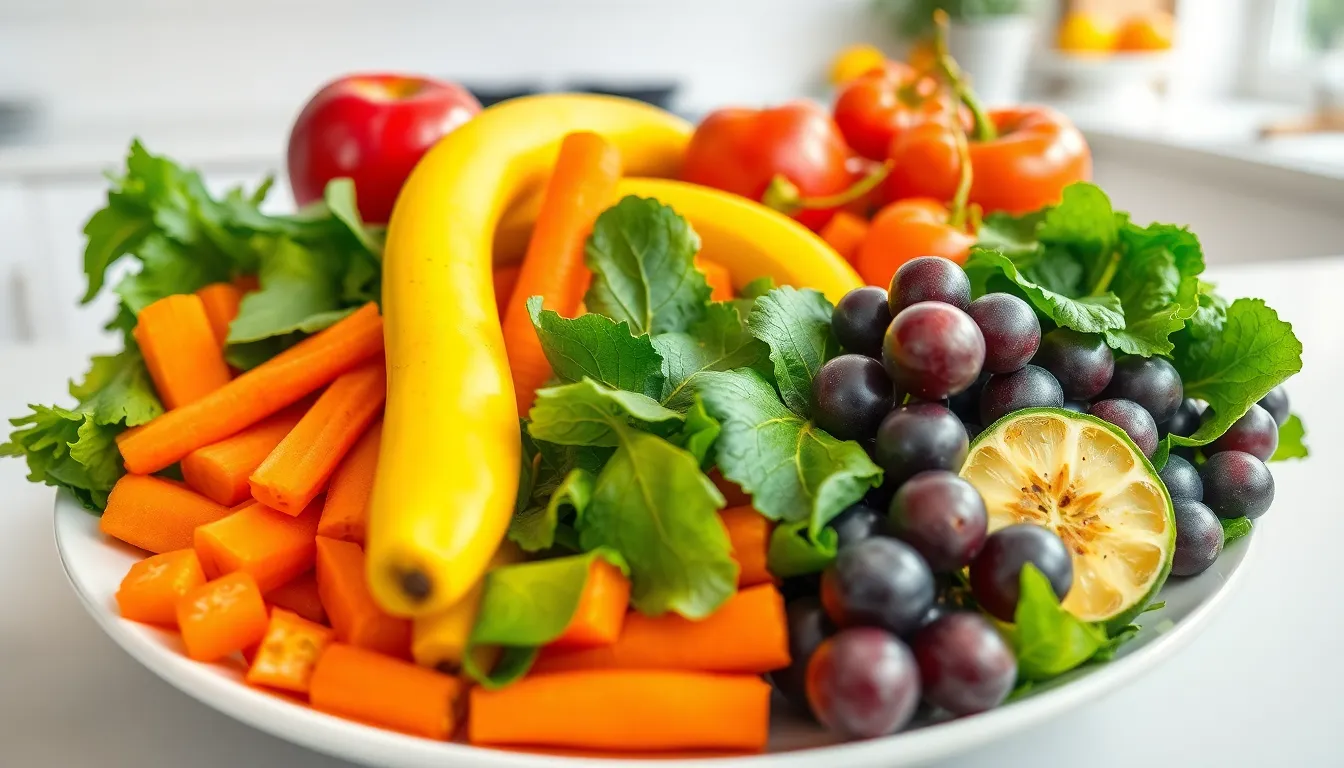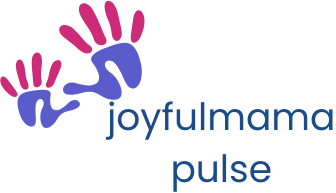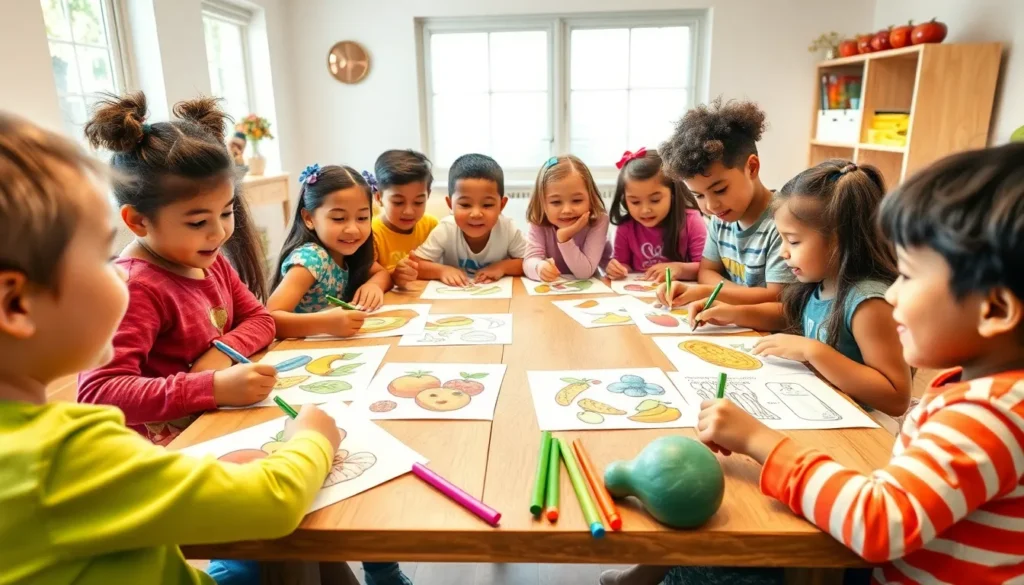Table of Contents
ToggleGetting kids excited about nutrition can feel like trying to convince a cat to take a bath. But what if there’s a way to make learning about food fun and engaging? Enter food group color pages! These vibrant, interactive tools not only capture kids’ attention but also teach them the importance of balanced eating in a creative way.
Overview of Nutrition for Kids
Nutrition plays a crucial role in children’s growth and development. Balanced diets promote overall health, ensuring kids receive essential vitamins and nutrients. Nutrients like carbohydrates, proteins, fats, vitamins, and minerals contribute to strong bones, cognitive function, and energy levels.
Every food group provides distinct benefits, emphasizing the importance of variety. Grains offer energy; fruits and vegetables deliver vitamins and minerals. Protein sources such as meat, beans, and nuts help in tissue repair and muscle development. Dairy products provide calcium, crucial for strong bones and teeth.
Interactive tools like food group color pages simplify these concepts for kids. Colorful illustrations engage children, making it easier for them to identify foods belonging to each group. Learning about nutrition through fun activities encourages kids to explore new foods. Involving children in meal planning can heighten their interest in nutritious choices.
Parents can set healthy examples by consuming balanced meals. Demonstrating healthy eating habits influences kids’ preferences and attitudes towards food. The more variety they see on their plates, the more likely they are to try different ingredients.
Research indicates that early exposure to a variety of foods nurtures lifelong healthy eating patterns. Teaching children the benefits of each food group fosters informed decision-making in their eating habits. Educating them about nutrition through creative resources positions them for success in developing healthy lifestyles.
Importance of Food Groups

Understanding food groups is essential for children’s health and development. Each group offers unique benefits that contribute to overall well-being.
Essential Nutrients for Growth
Essential nutrients play a crucial role in children’s growth. Carbohydrates provide energy needed for daily activities. Proteins support tissue repair and muscle development. Vitamin-rich fruits and vegetables boost immunity and promote healthy skin. Dairy products supply calcium, important for strong bones and teeth. Each nutrient helps ensure children grow up healthy and strong.
The Role of Color in Food Groups
Color in food groups helps children associate nutritional value with visual cues. Bright fruits and vegetables often signify high vitamin and mineral content. Colorful plates encourage children to explore diverse flavors and textures. Including a rainbow of food on the plate makes meals visually appealing. Engaging children through color can inspire healthier eating habits, leading to a greater interest in varied foods. Each color represents different nutrients, showing that variety contributes to balanced nutrition.
Using Color Pages for Education
Color pages serve as a dynamic tool in nutrition education, capturing children’s attention and making learning about food groups enjoyable. These resources engage learners, encouraging them to explore the vibrant world of healthy eating.
Engaging Children with Visuals
Visuals effectively attract children’s interest and maintain their enthusiasm for nutrition. Bright colors in food group color pages help kids associate specific hues with healthy foods. Children often relate orange with carrots, green with broccoli, or red with strawberries. This connection not only enhances memory retention but also sparks curiosity about various fruits and vegetables. When kids see appealing images, they’re more likely to discuss their favorite foods and request healthier options during meals.
Activities and Crafts with Color Pages
Color pages offer endless opportunities for interactive activities and crafts. Kids can color images of food groups, turning learning into a hands-on experience. Creating collages with cut-out food pictures fosters creativity while reinforcing nutrition concepts. Incorporating quizzes or games alongside coloring activities heightens engagement, making nutrition lessons memorable. Events like “Colorful Plate Day,” where children showcase their colored plates featuring diverse foods, inspire pride and excitement in choosing nutritious meals.
Tips for Parents and Educators
Colorful food group pages serve as a valuable resource for parents and educators, enhancing children’s understanding of nutrition.
Incorporating Color Pages in Meal Planning
Incorporating color pages in meal planning creates an engaging experience. Parents can use these pages to discuss food groups while preparing meals. Initiating conversations about which colors represent each food group aids in reinforcing knowledge. Parents can invite children to choose foods based on their favorite colors, encouraging personal preference. Creating colorful meal plates based on these insights fosters excitement around healthy eating. Additionally, families can track their meals through colorful charts, visually representing daily progress in meeting nutritional goals.
Encouraging Healthy Eating Habits
Encouraging healthy eating habits starts with fun activities using color pages. Children often feel empowered when they participate in meal preparation. Allowing them to select vibrant fruits and vegetables introduces choice and ownership in their nutrition journey. Introducing themed days, like “Rainbow Day,” accentuates the importance of diverse nutrient intake. Sharing fun facts about each color’s nutritional benefits reinforces this learning. Regular discussion about colors in relation to food supports ongoing awareness and interest in healthy eating. Through these methods, children develop positive associations with various food groups, promoting lifelong healthy choices.
Embracing colorful food group pages can transform how children perceive nutrition. By making learning interactive and visually stimulating, these resources not only capture kids’ attention but also instill essential knowledge about healthy eating. Encouraging children to explore diverse colors on their plates can lead to a broader acceptance of nutritious foods.
Parents and educators can utilize these tools to foster a positive relationship with food. The excitement generated through engaging activities helps reinforce the importance of balanced diets. As children develop these healthy habits early on, they’re more likely to carry them into adulthood, paving the way for a lifetime of wellness.





